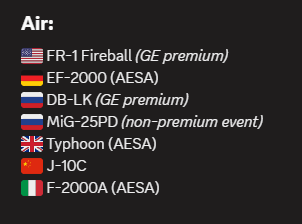History
Design and Development
Design of the FR-1 began in 1942-1943 when Admiral John S. McCain Sr. requested a new mixed-propulsion fighter. The Navy had a specific need for a hybrid aircraft utilizing both a conventional radial engine and a jet engine, as early turbojets lacked the thrust and reliability needed for carrier operations.
Nine manufacturers submitted proposals between late 1942 and January 1943. Among them was the Ryan Aeronautical Company, best known for building Charles Lindbergh’s Spirit of St. Louis. Although Ryan had never built a combat aircraft, the Navy accepted its design. On February 11, 1943, Ryan was awarded a contract for three XFR-1 prototypes and one static test airframe.
The XFR-1 was a single-seat, low-wing monoplane with tricycle landing gear. It was powered by a 1,350 hp Wright R-1820-72W Cyclone radial engine in the nose, paired with a 1,600 lbf General Electric J31 turbojet mounted in the rear fuselage. Air for the jet engine was supplied through ducts in the wing roots, which necessitated a thick wing design to accommodate both the ducts and the landing gear. The FR-1 also became the first carrier-based aircraft to feature a laminar flow airfoil. The cockpit, fitted with a bubble canopy, was positioned forward of the wing’s leading edge for excellent visibility, and armor plates were installed in front of and behind the pilot’s seat and oil cooler.
Armament consisted of four .50-cal M2 Browning machine guns with 300 rounds each, mounted in the wing center section just outboard of the turbojet ducts. The aircraft also featured two underwing hardpoints capable of carrying 1,000 lb bombs or drop tanks, and racks for four 5-inch rockets.
Prototype Testing
The first two prototypes were completed within 14 months and delivered by April 1944. Meanwhile, a production order for 100 FR-1 Fireballs had already been placed on December 2, 1943. The first prototype flew on June 25, 1944, without its jet engine installed. Initial flight testing showed favorable characteristics, and the jet engine was added soon after. The second prototype, fitted with the jet engine, first flew on September 20, 1944.
Flight testing revealed longitudinal instability and a miscalculated center of gravity. To address this, a new tail with enlarged vertical and horizontal stabilizers was designed and retrofitted. The original Douglas double-slotted flaps were replaced with single-slotted flaps.
Operational testing at the Naval Air Test Center identified three main issues: overheating of the radial engine, poor placement of catapult hooks, and a weak nosewheel oleo strut. These were resolved with the addition of electrically operated cowl flaps, relocated catapult hooks, and a 3-inch extension to the nose strut.
Carrier trials began in January 1945 aboard the escort carrier USS Charger. The FR-1 successfully completed five catapult launches using only the piston engine and three additional launches using both powerplants. No issues were reported during carrier landings, marking the first successful operation of a jet-powered aircraft aboard a carrier.
Unfortunately, all three prototypes were eventually lost. The first crashed at NAS China Lake on October 13, 1944, due to insufficient wing strength under compressibility effects. The second prototype was lost on March 25, 1945, during a dive from 35,000 feet, likely also due to compressibility issues. The third crashed on April 5, 1945, when its canopy blew off during a high-speed pass over Lindbergh Field.
Operational Service
VF-66 was established on January 1, 1945, at NAS San Diego and began receiving production FR-1s in March. The squadron was scheduled for Pacific deployment, but first conducted carrier qualifications aboard USS Ranger. These trials marked the first time a Navy squadron operated a jet-powered aircraft from a carrier. Despite some landing incidents, the pilots completed their qualifications by June 1945. However, the war ended before the unit could deploy, and production was halted after just 66 aircraft. VF-66 was deactivated on October 18, 1945.
The aircraft and remaining pilots were reassigned to VF-41 aboard USS Wake Island in November 1945. During qualification attempts, only 14 of 22 pilots completed the required six takeoffs and landings. Several landing accidents occurred, many caused by nose gear failures after pilots slammed the nose gear onto the deck during recovery.
Further qualifications aboard USS Bairoko in March 1946 resulted in more nose gear-related incidents. Ryan engineers addressed the problem by installing a steel fork on the nosewheel assembly, which was retrofitted across the fleet. Inspections also uncovered partial wing failures, and maneuvering limits were imposed, no more than 5 Gs.
VF-41, redesignated VF-1E after November 15, 1946, completed a final carrier qualification aboard USS Badoeng Strait in March 1947, with eight pilots qualifying. A final deployment aboard USS Rendova followed in June 1947. During this deployment, one FR-1 broke in two after a hard landing. Though capable of operating from small escort carriers, the FR-1’s structural fragility again proved problematic for carrier use. The entire type was withdrawn from service by August 1, 1947.














